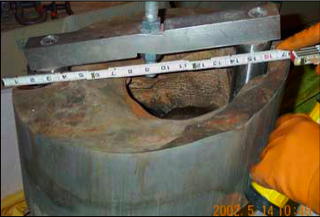 W
WThe United States Government Accountability Office reported more than 150 incidents from 2001 to 2006 of nuclear plants not performing within acceptable safety guidelines. According to a 2010 survey of energy accidents, there have been at least 56 accidents at nuclear reactors in the United States. The most serious of these was the Three Mile Island accident in 1979. Davis-Besse Nuclear Power Plant has been the source of two of the top five most dangerous nuclear incidents in the United States since 1979. Relatively few accidents have involved fatalities.
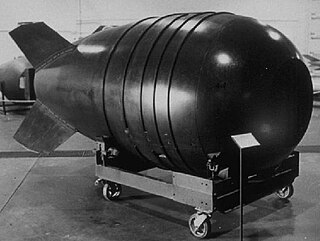 W
WThe 1958 Mars Bluff B-47 nuclear weapon loss incident was the inadvertent release of a nuclear weapon from a United States Air Force B-47 bomber over Mars Bluff, South Carolina. The bomb, which lacked the fissile nuclear core, fell over the area, causing damage to buildings below. Though there was no nuclear detonation, six people were injured by the explosion of the bomb's conventional explosives. The Air Force was sued by the family of the victims, who received US$54,000, equivalent to $484,381 in 2020.
 W
WBOMARC Site RW-01 is a 75-acre (30 ha) fenced-off site contaminated primarily with "weapons-grade plutonium (WGP), highly-enriched and depleted uranium." On 7 June 1960 an explosion in a CIM-10 Bomarc missile fuel tank caused the accident and subsequent contamination. The explosion occurred at Launcher Shelter 204, McGuire AFB, Ocean County, New Jersey, approximately 16.1 miles (25.9 km) south-southeast of Trenton, New Jersey. Launcher Shelter 204 was one of fifty-four located at McGuire AFB, operated by the 46th Air Defense Missile Squadron.
 W
WThe Damascus Titan missile explosion was a 1980 U.S. Broken Arrow incident involving a Titan II Intercontinental Ballistic Missile (ICBM). The incident occurred on September 18–19, 1980, at Missile Complex 374-7 in rural Arkansas when a U.S. Air Force LGM-25C Titan II ICBM loaded with a 9 megaton W-53 Nuclear Warhead had a liquid fuel explosion inside its silo. Launch Complex 374-7 was located in Bradley Township, Van Buren County farmland just 3.3 miles NNE of Damascus, and approximately fifty miles (80 km) north of Little Rock.
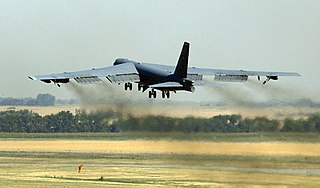 W
WOn 29 August 2007, six AGM-129 ACM cruise missiles, each loaded with a W80-1 variable yield nuclear warhead, were mistakenly loaded onto a United States Air Force (USAF) B-52H heavy bomber at Minot Air Force Base in North Dakota and transported to Barksdale Air Force Base in Louisiana. The nuclear warheads in the missiles were supposed to have been removed before the missiles were taken from their storage bunker. The missiles with the nuclear warheads were not reported missing, and remained mounted to the aircraft at both Minot and Barksdale for 36 hours. During this period, the warheads were not protected by the various mandatory security precautions for nuclear weapons.
 W
WAtomics International was a division of the North American Aviation company which engaged principally in the early development of nuclear technology and nuclear reactors for both commercial and government applications. Atomics International was responsible for a number of accomplishments relating to nuclear energy: design, construction and operation of the first nuclear reactor in California (1952), the first nuclear reactor to produce power for a commercial power grid in the United States (1957) and the first nuclear reactor launched into outer space by the United States (1965).
 W
WNortheast of San Francisco, California, on 5 August 1950, a United States Air Force Boeing B-29 Superfortress bomber carrying a Mark 4 nuclear bomb crashed shortly after takeoff from Fairfield-Suisun Air Force Base with 20 men on board. Twelve men were killed in the crash, including the commander of the 9th Bombardment Wing, Brigadier General Robert F. Travis, and another seven were killed on the ground when the aircraft exploded. The base was later renamed for Travis.
 W
WBOMARC Site RW-01 is a 75-acre (30 ha) fenced-off site contaminated primarily with "weapons-grade plutonium (WGP), highly-enriched and depleted uranium." On 7 June 1960 an explosion in a CIM-10 Bomarc missile fuel tank caused the accident and subsequent contamination. The explosion occurred at Launcher Shelter 204, McGuire AFB, Ocean County, New Jersey, approximately 16.1 miles (25.9 km) south-southeast of Trenton, New Jersey. Launcher Shelter 204 was one of fifty-four located at McGuire AFB, operated by the 46th Air Defense Missile Squadron.
 W
WThe Browns Ferry Nuclear Plant is located on the Tennessee River near Decatur and Athens, Alabama, on the north side of Wheeler Lake. The site has three General Electric boiling water reactor (BWR) nuclear generating units and is owned entirely by the Tennessee Valley Authority (TVA). With a generating capacity of nearly 3.8 gigawatts, it is the second most powerful nuclear plant in the United States, behind the Palo Verde Nuclear Generating Station in Arizona, and the most powerful generating station operated by TVA.
 W
WThe Church Rock uranium mill spill occurred in the U.S. state of New Mexico on July 16, 1979, when United Nuclear Corporation's tailings disposal pond at its uranium mill in Church Rock breached its dam. The accident remains the largest release of radioactive material in U.S. history, having released more radioactivity than the Three Mile Island accident four months earlier.
 W
WDavis–Besse Nuclear Power Station is a 894 megawatt (MW), nuclear power plant, located northeast of Oak Harbor, Ohio in Ottawa County, Ohio. It has a single pressurized water reactor. Davis–Besse is operated by Energy Harbor.
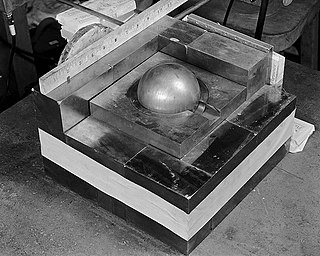 W
WThe demon core was a spherical 6.2-kilogram (14 lb) subcritical mass of plutonium 89 millimetres (3.5 in) in diameter, manufactured during World War II by the United States nuclear weapon development effort, the Manhattan Project, as a fissile core for an early atomic bomb. It was involved in two criticality accidents, on August 21, 1945, and May 21, 1946. The core was intended for use in a possible third nuclear weapon to be dropped on Japan, but when Japan's surrender made this unnecessary, it was repurposed for testing. It was designed with a small safety margin to ensure a successful explosion of the bomb. The device briefly went supercritical when it was accidentally placed in supercritical configurations during two separate experiments intended to guarantee the core was close to the critical point. The incidents happened at the Los Alamos Laboratory, resulting in the acute radiation poisoning and subsequent deaths of scientists Harry Daghlian and Louis Slotin, respectively. After these incidents the spherical plutonium core was referred to as the "demon core".
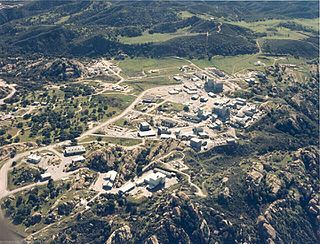 W
WThe Energy Technology Engineering Center (ETEC), was a government-owned, contractor-operated complex of industrial facilities located within the 2,850-acre (11.5 km2) Santa Susana Field Laboratory (SSFL), Ventura County, California. The ETEC specialized in non-nuclear testing of components which were designed to transfer heat from a nuclear reactor using liquid metals instead of water or gas. The center operated from 1966 to 1998. The ETEC site has been closed and is now undergoing building removal and environmental remediation by the U.S. Department of Energy.
 W
WThe Enrico Fermi Nuclear Generating Station is a nuclear power plant on the shore of Lake Erie near Monroe, in Frenchtown Charter Township, Michigan on approximately 1,000 acres (400 ha). All units of the plant are operated by the DTE Energy Electric Company and owned by parent company DTE Energy. It is approximately halfway between Detroit, Michigan, and Toledo, Ohio. It is also visible from parts of Amherstburg and Colchester, Ontario as well as on the shore of Lake Erie in Ottawa County, Ohio. Two units have been constructed on this site. The first unit's construction started on August 4, 1956 and reached initial criticality on August 23, 1963, and the second unit received its construction permit on September 26, 1972. It reached criticality on June 21, 1985 and was declared commercial on November 18, 1988. The plant is connected to two single-circuit 345 kV Transmission Lines and three 120 kV lines. They are operated and maintained by ITC Transmission.
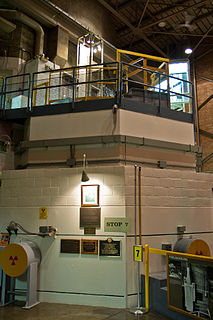 W
WExperimental Breeder Reactor I (EBR-I) is a decommissioned research reactor and U.S. National Historic Landmark located in the desert about 18 miles (29 km) southeast of Arco, Idaho. It was the world's first breeder reactor. At 1:50 p.m. on December 20, 1951, it became one of the world's first electricity-generating nuclear power plants when it produced sufficient electricity to illuminate four 200-watt light bulbs. Electricity had earlier been generated by a nuclear reactor on September 3, 1948 at the X-10 Graphite Reactor in Oak Ridge, Tennessee. EBR-I subsequently generated sufficient electricity to power its building, and continued to be used for experimental purposes until it was decommissioned in 1964. The museum is open for visitors from late May until early September.
 W
WThe Lady Godiva device was an unshielded, pulsed nuclear reactor originally situated at the Los Alamos National Laboratory (LANL), near Santa Fe, New Mexico. It was one of a number of criticality devices within Technical Area 18 (TA-18). Specifically, it was used to produce bursts of neutrons and gamma rays for irradiating test samples, and inspired development of Godiva-like reactors.
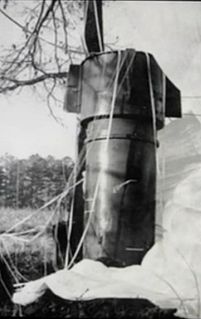 W
WThe 1961 Goldsboro B-52 crash was an accident that occurred near Goldsboro, North Carolina, on 23 January 1961. A Boeing B-52 Stratofortress carrying two 3–4-megaton Mark 39 nuclear bombs broke up in mid-air, dropping its nuclear payload in the process. The pilot in command, Walter Scott Tulloch, ordered the crew to eject at 9,000 feet (2,700 m). Five crewmen successfully ejected or bailed out of the aircraft and landed safely; another ejected, but did not survive the landing, and two died in the crash. Information declassified in 2013 showed that one of the bombs came very close to detonating.
 W
WThe Hanford Site is a decommissioned nuclear production complex operated by the United States federal government on the Columbia River in Benton County in the U.S. state of Washington. The site has been known by many names, including Hanford Project, Hanford Works, Hanford Engineer Works and Hanford Nuclear Reservation.
 W
WThe Three Mile Island accident was a partial meltdown of reactor number 2 of Three Mile Island Nuclear Generating Station (TMI-2) in Dauphin County, Pennsylvania, near Harrisburg, and subsequent radiation leak that occurred on March 28, 1979. It is the most significant accident in U.S. commercial nuclear power plant history. On the seven-point International Nuclear Event Scale, the incident was rated a five as an "accident with wider consequences."
 W
WProject 4.1 was the designation for a medical study and experimentation conducted by the United States of those residents of the Marshall Islands exposed to radioactive fallout from the March 1, 1954 Castle Bravo nuclear test at Bikini Atoll, which had an unexpectedly large yield. Government and mainstream historical sources point to the study being organized on March 6 or March 7, 1954, six days after the Bravo shot.
 W
WThe Santa Susana Field Laboratory (SSFL), formerly known as Rocketdyne, is a complex of industrial research and development facilities located on a 2,668-acre (1,080 ha) portion of the Southern California in the hills between Simi Valley and Los Angeles.
 W
WThe 1964 Savage Mountain B-52 crash was a U.S. military nuclear accident in which a Cold War bomber's vertical stabilizer broke off in winter storm turbulence. The two nuclear bombs being ferried were found "relatively intact in the middle of the wreckage", and after Fort Meade's 28th Ordnance Detachment secured them, the bombs were removed two days later to the Cumberland Municipal Airport.
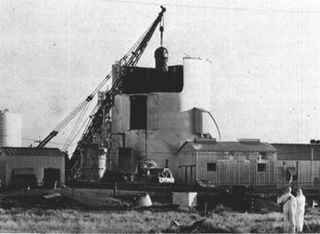 W
WStationary Low-Power Reactor Number One, also known as SL-1 or the Argonne Low Power Reactor (ALPR), was a United States Army experimental nuclear reactor located at the National Reactor Testing Station (NRTS), basis of what is now the Idaho National Laboratory, west of Idaho Falls, Idaho, United States. At 9:01pm, on the night of January 3, 1961, SL-1 underwent a steam explosion and meltdown, killing its three operators. The direct cause was the improper withdrawal of the central control rod, responsible for absorbing neutrons in the reactor's core. The event is the only reactor accident in U.S. history to have resulted in immediate fatalities. The accident released about 80 curies (3.0 TBq) of iodine-131, which was not considered significant due to its location in the remote high desert of eastern Idaho. About 1,100 curies (41 TBq) of fission products were released into the atmosphere.
 W
WThe Sodium Reactor Experiment was a pioneering nuclear power plant built by Atomics International at the Santa Susana Field Laboratory near Simi Valley, California. The reactor operated from 1957 to 1964. On July 12, 1957 the Sodium Reactor Experiment became the first nuclear reactor in the United States to produce electrical power for a commercial power grid by powering the nearby city of Moorpark. In July 1959, the reactor experienced a partial meltdown where 13 of the reactor's 43 fuel elements partially melted, and a controlled release of radioactive gas into the atmosphere occurred. The reactor was repaired and restarted in September 1960. In February 1964, the Sodium Reactor Experiment was in operation for the last time. Removal of the deactivated reactor was completed in 1981. Technical analyses of the 1959 incident have produced contrasting conclusions regarding the types and quantities of radioactive materials released. Members of the neighboring communities have expressed concerns about the possible impacts on their health and environment from the incident. In August 2009, 50 years after the occurrence, the Department of Energy hosted a community workshop to discuss the 1959 incident.
 W
WThe Three Mile Island accident was a partial meltdown of reactor number 2 of Three Mile Island Nuclear Generating Station (TMI-2) in Dauphin County, Pennsylvania, near Harrisburg, and subsequent radiation leak that occurred on March 28, 1979. It is the most significant accident in U.S. commercial nuclear power plant history. On the seven-point International Nuclear Event Scale, the incident was rated a five as an "accident with wider consequences."
 W
WThe Tybee Island mid-air collision was an incident on February 5, 1958, in which the United States Air Force lost a 7,600-pound (3,400 kg) Mark 15 nuclear bomb in the waters off Tybee Island near Savannah, Georgia, United States. During a practice exercise, an F-86 fighter plane collided with the B-47 bomber carrying the bomb. To protect the aircrew from a possible detonation in the event of a crash, the bomb was jettisoned. Following several unsuccessful searches, the bomb was presumed lost somewhere in Wassaw Sound off the shores of Tybee Island.
 W
WWest Lake Landfill is a closed, unlined mixed-waste landfill located in Bridgeton, Missouri. It was featured in the 2015 documentaries The First Secret City, The Safe Side of the Fence and the 2017 HBO documentary Atomic Homefront. Its contents have been shown to include radioactive waste; it is thus also an EPA Superfund cleanup site.
 W
WThe Y-12 National Security Complex is a United States Department of Energy National Nuclear Security Administration facility located in Oak Ridge, Tennessee, near the Oak Ridge National Laboratory. It was built as part of the Manhattan Project for the purpose of enriching uranium for the first atomic bombs. It is considered the birthplace of the atomic bomb. In the years after World War II, it has been operated as a manufacturing facility for nuclear weapons components and related defense purposes.
 W
WOn 14 March 1961 an aircraft accident occurred near Yuba City, California. A United States Air Force B-52F-70-BW Stratofortress bomber, AF Serial No. 57-0166, c/n 464155, carrying two nuclear weapons departed from Mather Air Force Base near Sacramento. According to the official Air Force report, the aircraft experienced an uncontrolled decompression that required it to descend to 10,000 feet (3,000 m) in order to lower the cabin altitude. Increased fuel consumption caused by having to fly at lower altitude, combined with the inability to rendezvous with a tanker in time caused the aircraft to run out of fuel. The aircrew ejected safely, and then the unmanned aircraft crashed 15 miles (24 km) west of Yuba City, tearing the nuclear weapons from the aircraft on impact. However, in a 2012 book LTC Earl McGill, a retired SAC B-52 pilot, claims that the aircrew, after an inflight refueling session that provided inadequate fuel, refused the offer of an additional, unscheduled inflight refueling, bypassed possible emergency landing fields and ran out of fuel. The crew ejected, the aircraft broke up and four onboard nuclear weapons were released. The weapons' multiple safety interlocks prevented both a nuclear explosion and release of radioactive material. LTC McGill, based on his SAC experience, blames the aircrew failures on the use of dexedrine to overcome tiredness on the 24-hour flight preceding the accident.